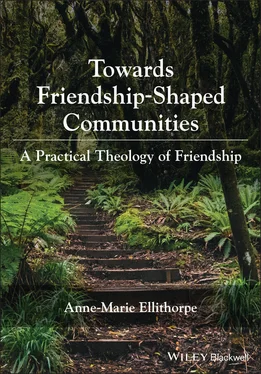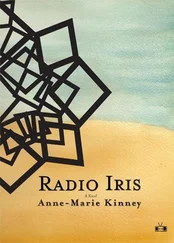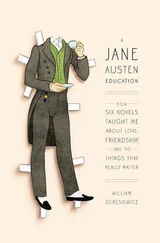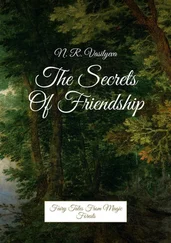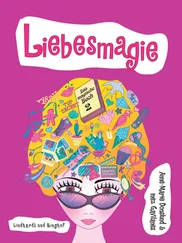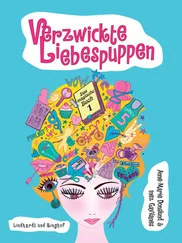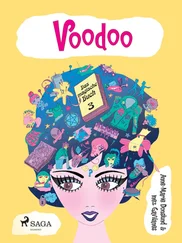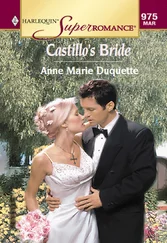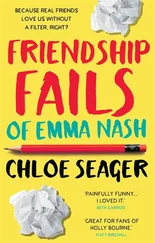23 23Terrell, A Talent for Friendship, 14.
24 24Georg Simmel and Everett C. Hughes, “The Sociology of Sociability,” American Journal of Sociology 55, no. 3 (1949): 257.
25 25Georg Simmel, “The Sociology of Secrecy and of Secret Societies,” American Journal of Sociology 11, no. 4 (1906): 458.
26 26Simmel, “The Sociology of Secrecy and of Secret Societies,” 458.
27 27Graham Allan and Rebecca G. Adams, “The Sociology of Friendship,” in 21st Century Sociology: A Reference Handbook, ed. Clifton D. Bryant and Dennis L. Peck (Thousand Oaks, CA: Sage, 2007), 123.
28 28Ray Pahl, On Friendship (Malden: Blackwell, 2000), 36. The analysis of friendship continues to be marginal in mainstream sociology. See Alice P. Julier, Eating Together: Food, Friendship, and Inequality (Urbana: University of Illinois Press, 2013), 2.
29 29See Sara H. Konrath, Edward H. O’Brien, and Courtney Hsing, “Changes in Dispositional Empathy in American College Students Over Time: A Meta-Analysis,” Personality and Social Psychology Review 15, no. 2 (2011).
30 30Miller McPherson, Lynn Smith-Lovin, and Matthew E. Brashears, “Social Isolation in America: Changes in Core Discussion Networks over Two Decades,” ASR 71, no. 3 (2006).
31 31Anthony Paik and Kenneth Sanchagrin, “Social Isolation in America: An Artifact,” ASR 78, no. 3 (2013): 339. Ivaylo Petev’s research corroborates these trends of civic disengagement and social isolation. Ivaylo D. Petev, “The Association of Social Class and Lifestyles: Persistence in American Sociability, 1974 to 2010,” ASR 78, no. 4 (2013). However, Anthony Paik and Kenneth Sanchagrin assert that interviewer effects, including interviewer training and interviewer fatigue, bias many estimates of social connectivity. See Paik and Sanchagrin, “Social Isolation in America: An Artifact,” 353–355.
32 32Ray Pahl and Liz Spencer, “Family, Friends, and Personal Communities: Changing Models‐in‐the‐Mind,” Journal of Family Theory & Review 2, no. 3 (2010): 197.
33 33Liz Spencer and Ray Pahl, Rethinking Friendship: Hidden Solidarities Today, 190–212.
34 34Pahl, On Friendship, 43.
35 35Pahl, On Friendship, 73.
36 36Pahl, On Friendship, 64.
37 37Frank Bruni, “How Facebook Warps Our Worlds,” The New York Times, 21 May 2016.
38 38Diane Jeske, Friendship and Social Media: A Philosophical Exploration (New York: Routledge, 2019), 133.
39 39The widespread usage of smart phones and social media has had a further benefit, in that these forms of technology have enabled the capture and sharing of life-threatening (or life-ending) acts of injustice, allowing citizens to see racial disparities and police brutality with their own eyes and provoking citizens to engage in acts of solidarity. See Walker-Barnes, Voices of My People, 21. On the other hand, widespread sharing can also have a retraumatizing impact.
40 40Mark Zuckerberg, “Is Connectivity a Human Right,” https://www.facebook.com/isconnectivityahumanright. Accessed 4 October, 2021.
41 41“Facebook Investor Relations,” https://investor.fb.com/resources/default.aspx. Accessed 4 October 2021.
42 42Jill Lepore, “Facebook’s Broken Vows: How the Company’s Pledge to bring the World Together Wound Up Pulling Us Apart,” New Yorker, https://www.newyorker.com/magazine/2021/08/02/facebooks-broken-vows. Accessed 4 October 2021.
43 43Lepore, “Facebook’s Broken Vows,” 4 October 2021.
44 44See Jeske, Friendship and Social Media.
45 45John Fitzgerald, “Christian Friendship: John, Paul, and the Philippians,” Interpretation 61, no. 3 (2007): 284.
46 46Fleming Rutledge, The Battle for Middle-Earth: Tolkien’s Divine Design in The Lord of the Rings (Grand Rapids: Eerdmans, 2004), 6, 30.
47 47Rutledge, Battle, 78.
48 48Rutledge, Battle, 115. “I think, Elrond, that in this matter it would be well to trust to their friendship rather than to great wisdom.” Merry tells Frodo: “You can trust us to stick to you through thick and thin – to the bitter end. And you can trust us to keep any secret of yours – closer than you keep it yourself. But you cannot trust us to let you face trouble alone and go off without a word. We are your friends, Frodo…” J.R.R. Tolkien, The Fellowship of the Ring: Being the First Part of The Lord of the Rings (Boston: Houghton Mifflin, 1954), 103. Friendships (characterized by loyalty, courage, honesty, and hospitality, along with shared insight, interests, and vision) also feature in C.S. Lewis’s Chronicles of Narnia, originally published in the 1950s.
49 49Rutledge, Battle, 115.
50 50Texts focused on love of neighbor include Leviticus 19:18, Matthew 5:43, Romans 13:9, Galatians 5:14, and James 2:8.
51 51Karl Barth, Ethics, trans. Geoffrey W. Bromiley (New York: Seabury, 1981), 189.
52 52Barth, Ethics, 189, 190.
53 53Emil Brunner, The Divine Imperative: A Study in Christian Ethics, trans. Olive Wyon (London: Lutterworth, 1937), 517.
54 54Anders Nygren, Agape and Eros, trans. A.G. Hebert (London: SPCK, 1932), ch. 8.
55 55Nygren, Agape and Eros, 138.
56 56Alan Vincelette, “Introduction,” in The Problem of Love in the Middle Ages: A Historical Contribution, ed. Pierre Rousselot (Milwaukee: Marquette University Press, 2001), 11.
57 57Nygren, Agape and Eros, ch. 8.
58 58See Martin Marty, “F is for Friendship: A Theological Dictionary,” The Christian Century, 24 February 2009.
59 59John Burnaby, Amor Dei: A Study of the Religion of St. Augustine (London: Hodder & Stoughton, 1938), 311. Yet depicting God as a cozy and tolerant companion, thus trivializing what could otherwise be a transformative relationship, is identified as kitsch piety.
60 60Simone Weil, “Friendship,” in Waiting for God (New York: HarperCollins, 1951).
61 61Dietrich Bonhoeffer, Ethics [“Ethik”], trans. Neville Horton Smith (London: SCM, 1955), 253 n.1.
62 62Dietrich Bonhoeffer, Letters and Papers from Prison, 3rd ed. (London: SCM, 1971), 192.
63 63Reformed understandings of the moral or ethical life focused on family, work, the state, and church. Liz Carmichael, Friendship: Interpreting Christian Love (London: T&T Clark, 2004), 160.
64 64Bonhoeffer, Letters and Papers from Prison, 192–193.
65 65Carmichael, Friendship, 161.
66 66Bonhoeffer, Ethics, 253 n.1.
67 67C.S. Lewis, The Four Loves (London: Geoffrey Bles, 1960), 69–70.
68 68Lewis, The Four Loves, 84.
69 69See Jason Lepojärvi, “Does Eros Seek Happiness? A Critical Analysis of C. S. Lewis’s Reply to Anders Nygren,” Neue Zeitschrift Für Systematische Theologie Und Religionsphilosophie 53, no. 2 (2011): 210.
70 70See Risto Saarinen, “Eros and Protestantism: From Nygren to Milbank,” in Gudstankens aktualitet: Bidrag om teologiens opgave og indhold og protestantismens indre spændinger, ed. E. Wiberg Pedersen (Copenhagen: Anis, 2010), 344–346.
71 71Jürgen Moltmann, The Source of Life: The Holy Spirit and the Theology of Life (London: SCM, 1997), 1–9.
72 72Jürgen Moltmann, The Open Church: Invitation to a Messianic Lifestyle (London: SCM, 1978), 50–63. Jürgen Moltmann, The Church in the Power of the Spirit: A Contribution to Messianic Ecclesiology (New York: Harper & Row, 1977), 114–121.
73 73Moltmann, Church in the Power of the Spirit, 115.
74 74Moltmann, Church in the Power of the Spirit, 116.
75 75Servais Pinckaers, The Sources of Christian Ethics (Washington, DC: Catholic University of America Press, 1995), 19.
76 76Pinckaers, The Sources of Christian Ethics, 20.
77 77Sallie McFague, Metaphorical Theology: Models of God in Religious Language (Philadelphia: Fortress, 1982); Sallie McFague, Models of God: Theology for an Ecological, Nuclear Age (Philadelphia: Fortress, 1987). In these earlier works Sallie McFague (1933-2019) focused on metaphorical theology. In her later works she focused on ecological theology. In her 2013 book she described herself as “a theologian who investigates the connections of religion with economics and ecology” and observed that “we live within our models and make decisions on the basis of them.” Sallie McFague, Blessed Are the Consumers: Climate Change and the Practice of Restraint (Augsburg Fortress Publishers, 2013), ix, xii. Her final book is A New Climate for Christology: Kenosis, Climate Change, and Befriending Nature (Fortress Press, 2021).
Читать дальше
